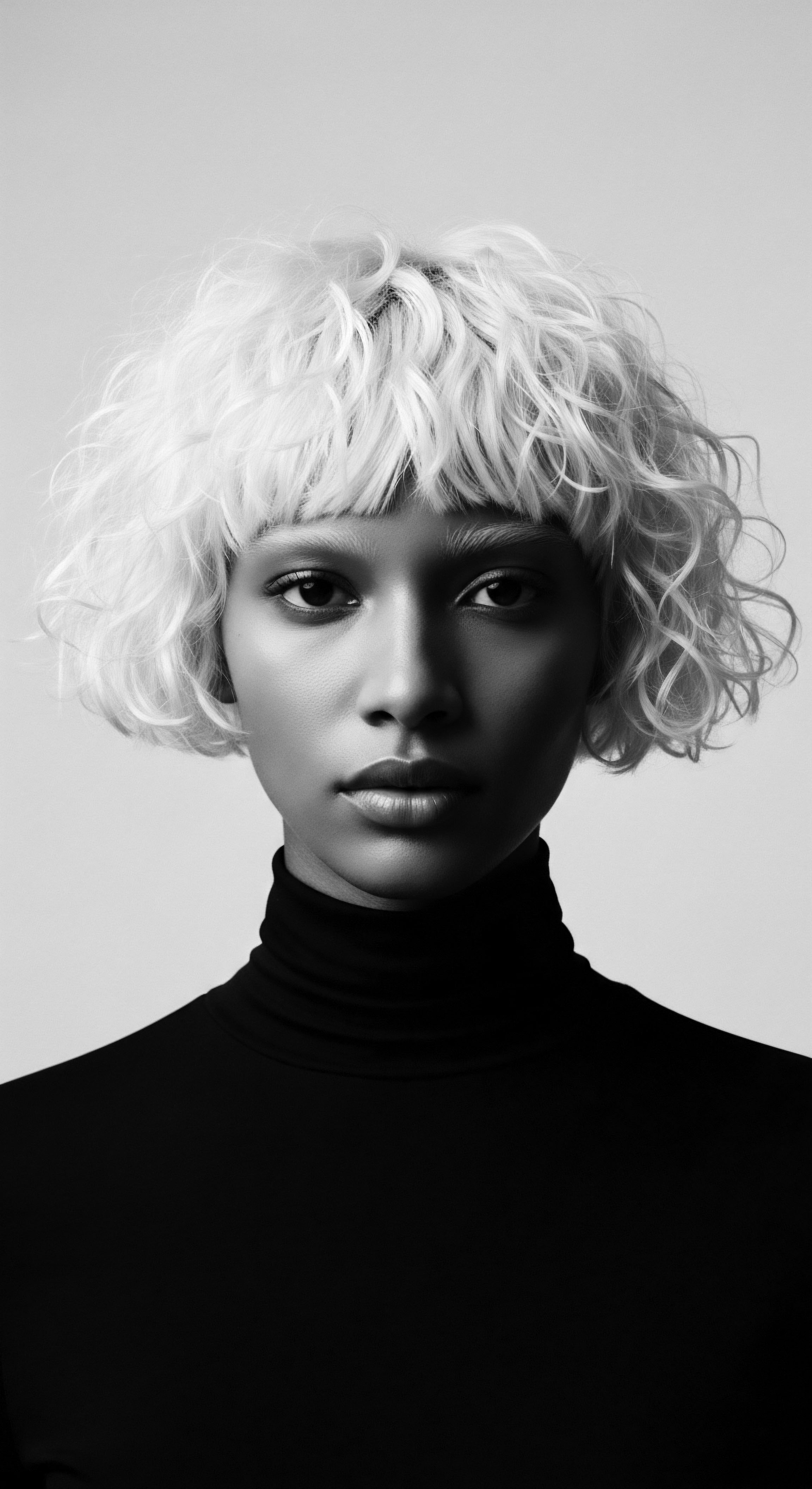
Roots
There exists a profound, unspoken language carried within the helix of each strand, a language echoing across generations. It speaks of ancestry, of wisdom passed through touch, of resilience etched into every curve and coil. To comprehend how textured hair has shaped identity is to listen intently to this enduring conversation, one that begins not with modern beauty standards, but deep in the wellspring of human existence and the earliest stirrings of communal life. This is a journey to the very core of our being, where elemental biology intertwines with the soul’s deepest knowing, revealing hair as a living archive of heritage.

What Does Textured Hair Reveal of Ancient Origins?
Centuries before the imposition of external beauty ideals, in the vibrant societies of pre-colonial Africa, hair was a powerful marker of identity. It was a visual lexicon, a complex system of communication that spoke volumes without a single uttered word. From the intricate patterns of braids to the carefully styled locs, a person’s coiffure could convey their tribal affiliation, social standing, age, marital status, and even spiritual beliefs.
This was a time when hair was revered, its styling an intimate social activity that strengthened bonds and transmitted knowledge across familial lines. The very act of preparing hair became a communal rite, connecting individuals to their heritage.
Consider the Akan people, for instance, whose traditional hairstyles were rich with symbolic meaning. The Mpɛnsɛmpɛ, with its thick braids arranged in a crown, symbolized wisdom and leadership, often gracing queens and noblewomen. Similarly, the Yoruba people, renowned for their artistry, saw hair as a sacred crown, a direct link to ancestors and deities.
An ancient Yoruba adage, “Irun ni ewa obinrin,” proclaims, “the hair is the beauty of a woman,” underscoring its revered place. Styles like Sùkú, a basket-like shape atop the head, signified elegance and status for young women and brides.
Textured hair, at its foundation, serves as a living chronicle, bearing the marks of ancestral wisdom and societal narratives.
The biological make-up of textured hair, with its elliptical follicle shape and unique curl pattern, provides its inherent strength and versatility. This distinct biology allowed for a vast spectrum of traditional styles, each a testament to human ingenuity and a profound understanding of natural properties. The helix, in its many formations, was not merely a biological attribute; it was a canvas for cultural expression, a direct lineage to the land and spirit of a people. Hair anatomy, when viewed through this ancestral lens, ceases to be a cold scientific fact and becomes a warm, historical truth, rooted in generations of lived experience.
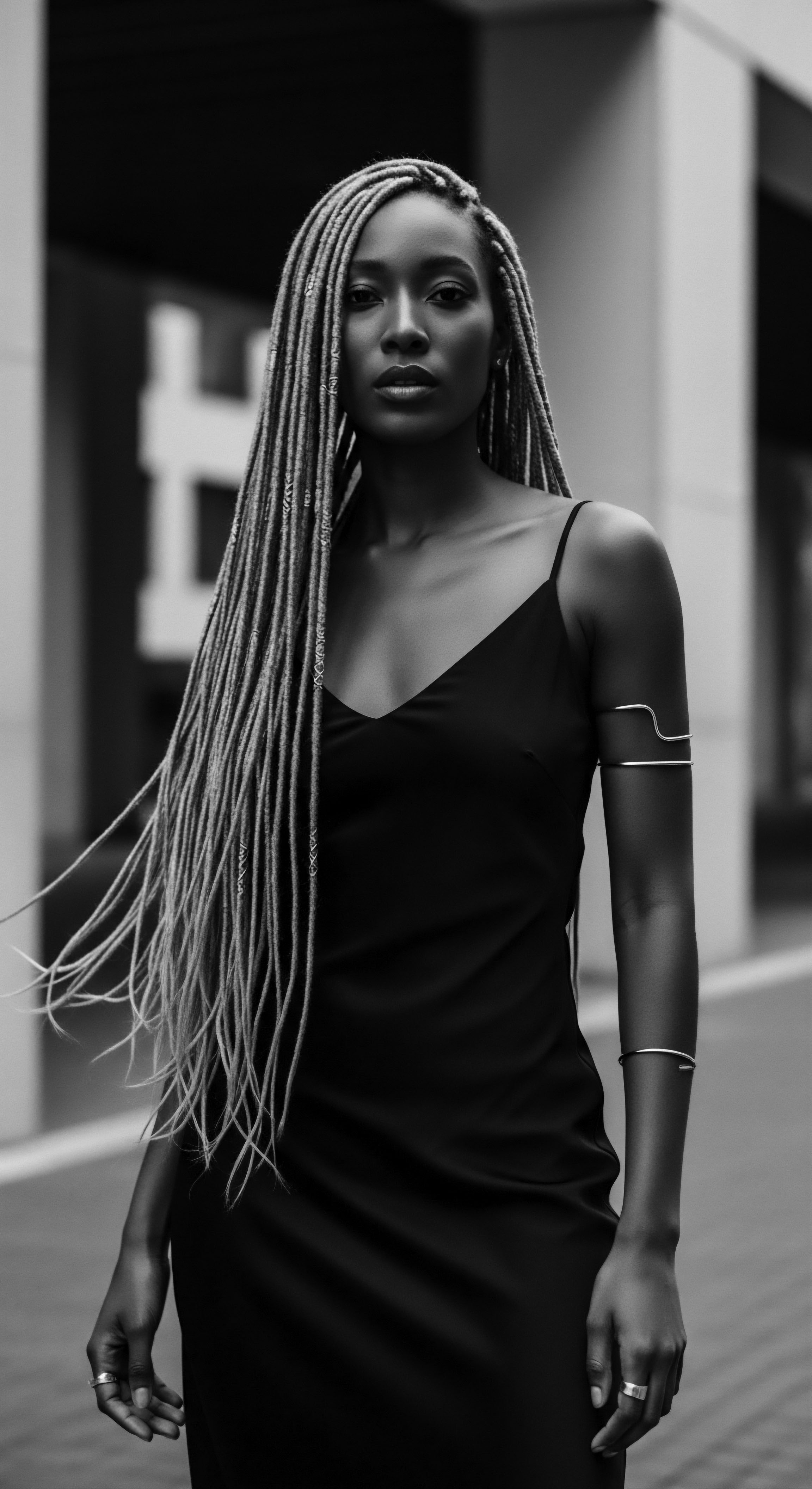
How Does Biology Inform Our Cultural Lexicon of Hair?
The language surrounding textured hair today, while seemingly modern, often echoes the deep understanding held by ancestral communities. Before formalized classification systems, people described hair based on its visible characteristics and how it behaved. They understood the nuances of tightness, coil, and strand density through daily interaction and specialized care.
Modern hair science, in its meticulous study of disulfide bonds and keratin structures, validates much of this ancestral observation, providing a contemporary framework for what was long known through practice and tradition. The terms we use today, like “coily” or “kinky,” while sometimes viewed as recent constructs, carry the weight of centuries of perception and tactile understanding, reflecting the intrinsic qualities that have always set textured hair apart.
| Ancient Cultural Significance Status, tribal identity, age, marital status, spiritual connection |
| Contemporary Hair Classification Principle Understanding varied curl patterns, from 3A to 4C, acknowledges inherent differences. |
| Ancient Cultural Significance Communication of group affiliation or life stage |
| Contemporary Hair Classification Principle Recognition of diverse hair types aids in targeted care and styling strategies. |
| Ancient Cultural Significance Adornment with beads, shells, or clay signified wealth and heritage |
| Contemporary Hair Classification Principle Categorization by porosity and density informs product selection for hair health. |
| Ancient Cultural Significance Hair as a medium for prayer or ritual |
| Contemporary Hair Classification Principle Scientific study of strand strength and elasticity helps preserve natural integrity. |
| Ancient Cultural Significance The enduring wisdom of heritage continually informs our present understanding of textured hair. |
The foundational lexicon of textured hair, therefore, is not simply a list of terms; it is a repository of shared human knowledge. It bridges the chasm between ancient insight and modern discovery, reminding us that every scientific revelation often begins with a long-standing observation, honed through generations of profound connection to our bodies and our traditions.

Ritual
The journey of textured hair through generations is a vibrant saga of art and science, a testament to human ingenuity and adaptation. It speaks of techniques honed over millennia, tools crafted with purpose, and transformations that extend beyond mere appearance, shaping self-perception and community bonds. These practices, rooted in ancestral soil, persist and evolve, demonstrating how the heritage of care rituals continues to guide us. The hands that braided and coiled hair centuries ago laid the groundwork for today’s diverse styling expressions, each movement a whisper from the past, a continuation of a sacred dialogue.
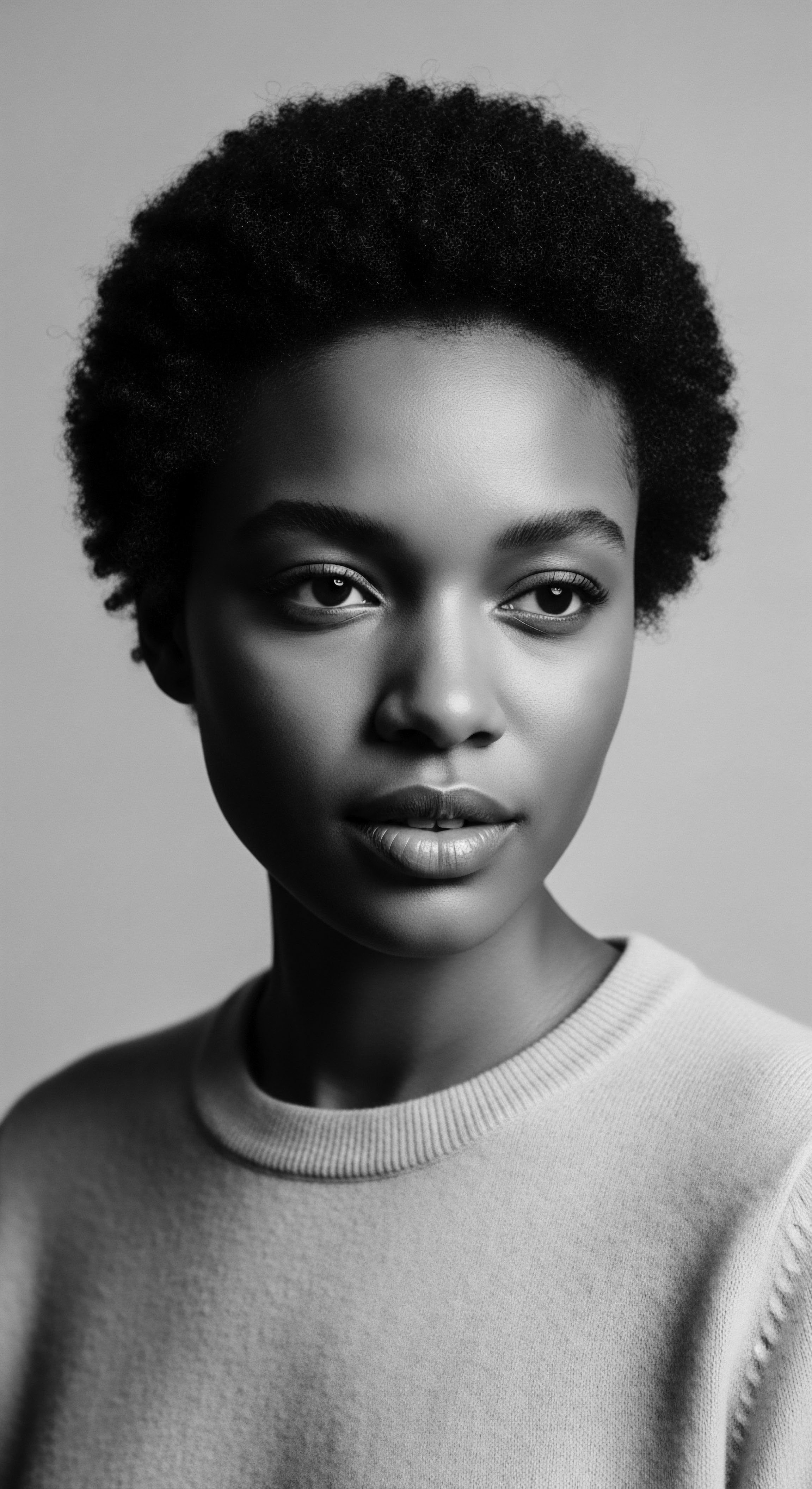
How Have Ancestral Styles Shaped Modern Expressions?
Long before the advent of chemical straighteners or thermal tools, West African communities developed sophisticated styling methods that prioritized hair protection and celebrated natural texture. These were not simply aesthetic choices. Hairstyles conveyed social information, acting as a visual code. For instance, some enslaved African women, particularly rice farmers, braided rice seeds into their hair before being forcibly transported during the Transatlantic slave trade.
This act served as a desperate measure for survival, a secret means of preserving both life and cultural heritage in a new, hostile land. This profound example of hidden sustenance reveals the hair as a vessel for survival, a silent act of defiance against a system designed to erase identity.
Another striking example comes from the Tignon Laws enacted in New Orleans in 1786. These laws compelled free women of color to cover their hair with a tignon, a scarf or handkerchief, ostensibly to mark them as belonging to the enslaved class, regardless of their freedom status. Yet, these women, with breathtaking creativity, subverted the law.
They used luxurious fabrics, tied elaborate knots, and adorned their tignons with jewels and feathers, turning a symbol of subjugation into a statement of beauty, wealth, and undeniable resistance. This historical anecdote powerfully illustrates how styling, even under duress, became a potent act of identity assertion, a reclamation of self through outward expression.
The enduring practice of styling textured hair stands as a testament to profound cultural resilience and ancestral knowledge.
The protective styles popular today, such as braids, twists, and cornrows, find their direct lineage in these ancient practices. These methods were initially developed not for fashion trends, but for functionality – to safeguard hair from environmental elements, maintain hygiene, and indicate social standing. The cornrow, for example, dates back at least 5000 years in African culture, with specific patterns communicating tribal affiliations and geographical origins.
The ingenuity of traditional tools also forms a vital part of this heritage. Before commercial products, combs and implements were carved from wood or bone, each tool designed to work harmoniously with the hair’s unique structure. While modern advancements offer new materials and technologies, the core principles of gentle manipulation and structural support echo these long-standing methods. Even the ritual of communal braiding sessions, where stories were shared and bonds fortified, speaks to a deeper connection between hair care and social cohesion.
- Adesoa ❉ Known as African threading, this technique involves wrapping sections of hair with thread, historically used by Akan women for hair protection and growth.
- Ìrun Dídì ❉ A Yoruba term referring to cornrows, a style deeply rooted in West African societies, conveying tribal affiliation, social status, and even serving as covert maps.
- Kolésè ❉ A Yoruba style where hair is braided backward, with naturally curling ends that do not lie flat, symbolizing natural beauty and ancestral connection.

What Wisdom Do Ancient Hair Routines Hold for Today?
The understanding of hair transformations in ancestral communities extended beyond simple styling. They recognized the inherent capabilities of textured hair to adapt and respond to various methods. Heat, for instance, was used cautiously and often in the form of warm oils or steaming to promote pliability, rather than the intense, direct heat of modern appliances. This traditional approach to thermal manipulation aimed to enhance natural qualities, not obliterate them.
The knowledge of ingredients – plant-based oils, butters, and herbs – was finely tuned to support hair health, passed down through oral tradition and practical application. This deep repository of ancestral wisdom offers valuable lessons for contemporary care, reminding us that the integrity of the hair is paramount. It is a dialogue between the fiber and the environment, mediated by conscious, heritage-informed practice.
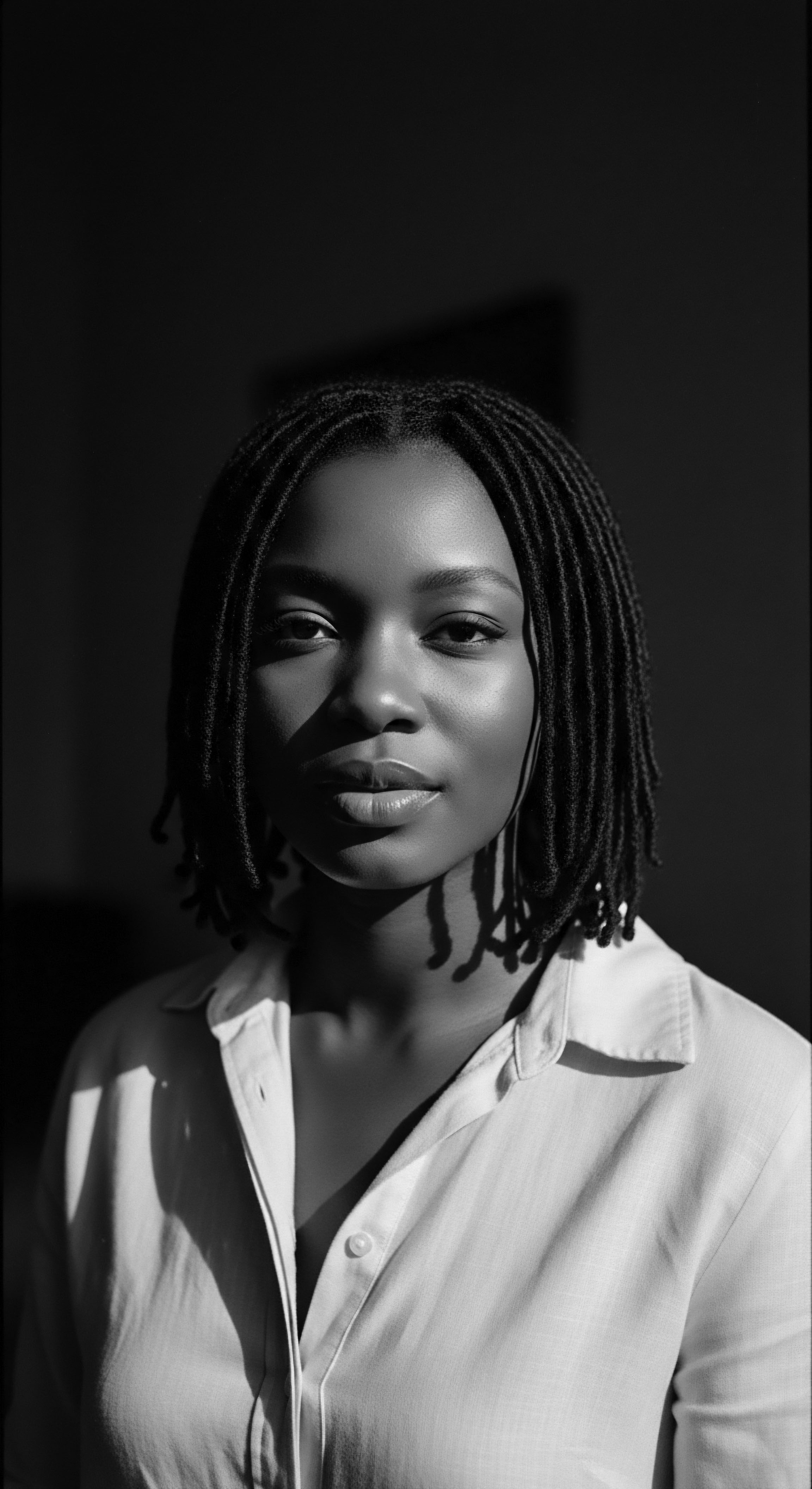
Relay
The ongoing narrative of textured hair, from ancient ritual to contemporary expression, is a powerful relay race through history, each generation picking up the baton of identity and carrying it forward. This segment explores how the principles of holistic care, nighttime rituals, and problem-solving, all deeply rooted in ancestral wisdom, continue to shape the lived experiences and future trajectories of textured hair. It delves into the profound interconnections between personal grooming, communal identity, and the enduring struggle for recognition.
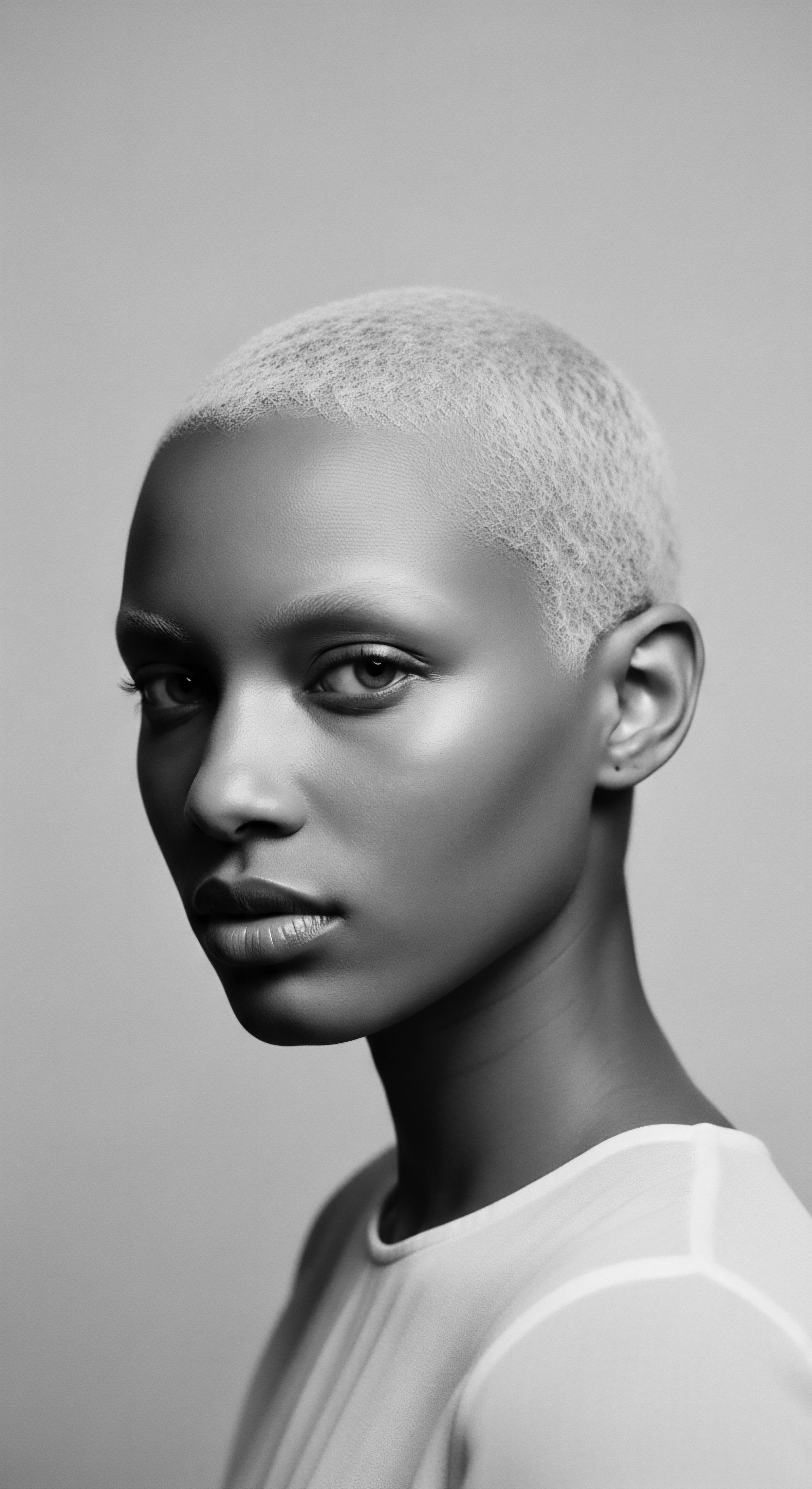
How Do Ancestral Wellness Philosophies Inform Modern Care?
Ancestral wellness philosophies viewed hair as an extension of the self, deeply linked to overall physical and spiritual wellbeing. This perspective contrasts sharply with a purely cosmetic approach. In many African cultures, the head held pre-eminent importance, considered the seat of power and spirit, making hair care a sacred practice.
This holistic view meant that nourishment for hair was often intertwined with diet, community connection, and even spiritual cleansing rituals. Traditional hair regimens were not merely about appearance; they were about maintaining balance and honor for the crown.
For instance, the application of natural oils and butters, often infused with indigenous herbs, served multiple purposes ❉ protection from the sun, moisture retention, and conditioning. These ingredients were locally sourced, their properties understood through generations of observation and experimentation. Today, we witness a resurgence of interest in these very elements, with modern science often confirming the efficacy of traditional practices. The shift towards minimal processing and the use of natural compounds in contemporary hair products echoes the long-held ancestral belief in working with the hair’s inherent nature, rather than against it.
Hair rituals, passed through generations, carry the weight of a people’s struggle and their triumphs in asserting identity.
The practice of nighttime protection, too, finds deep roots in practicality and preservation. Head coverings were not just for warmth or modesty; they protected intricate styles from wear and tear, ensuring their longevity and symbolic power. The bonnet, in its modern iteration, speaks to a lineage of care that understood the fragility of textured strands against friction, a simple yet powerful act of preservation that connects a contemporary user to ancient wisdom. This continuous thread of care, from meticulously crafted head wraps of antiquity to the satin-lined bonnets of today, underscores an unbroken chain of generational knowledge aimed at honoring and sustaining textured hair.

What Challenges and Triumphs Define Textured Hair’s Social Journey?
The journey of textured hair through history is marked by profound challenges, particularly with the advent of the transatlantic slave trade and subsequent colonial pressures. Forced head shaving of enslaved Africans was a deliberate act of dehumanization, a calculated effort to strip individuals of their identity and sever ties to their homeland. This act initiated a long period where textured hair became a site of oppression, with Eurocentric beauty standards elevated and enforced, often through policies and social pressures.
Even after formal slavery, the disdain for Afro-textured hair persisted, leading to significant societal and economic barriers. A 2023 research study, co-commissioned by Dove and LinkedIn, compellingly reveals the enduring impact ❉ Black Women’s Hair is 2.5 Times as Likely as White Women’s Hair to Be Perceived as “unprofessional.” This perception often translates into actionable consequences. The same study found that Approximately Two-Thirds (66%) of Black Women Change Their Hair for a Job Interview, with 41% altering their hair from curly to straight. These figures starkly illustrate the ongoing pressure to conform to beauty norms that historically exclude natural Black hair, shaping identity through forced adaptation.
Yet, amidst these challenges, textured hair has consistently served as a powerful symbol of resistance and self-determination. The “Black is Beautiful” movement of the 1960s and 70s saw the Afro hairstyle rise as a defiant declaration of pride, a rejection of imposed standards, and an assertion of Black identity. This period marked a collective reclamation, a visible manifestation of cultural heritage and a political statement rolled into one. The choice to wear natural hair became an act of protest, a public declaration of self-love and solidarity.
The journey of problem-solving for textured hair, therefore, spans both the physical and the systemic. From addressing dryness and breakage with traditional remedies, to confronting and dismantling institutional discrimination, the quest for hair wellness is a multifaceted endeavor. It speaks to the resilience of communities who continue to advocate for recognition and respect for their inherent beauty, drawing strength from a deep reservoir of ancestral wisdom and shared heritage.

Reflection
In the vast, interconnected story of human identity, textured hair stands as an eloquent testament to ancestral legacy and enduring spirit. From the biological helix that defines its structure to the myriad ways it has been adorned, guarded, and sometimes, regrettably, dismissed, each strand holds a living history. It is a boundless archive, whispering tales of ancient queens, resilient farmers, and defiant artists, all connected through the profound wisdom embedded in their coiffure. This is the very Soul of a Strand ❉ a recognition that the hair on one’s head is far more than protein and pigment; it is a repository of generational memory, a silent chant of cultural survival.
Our journey through its past, understanding its scientific makeup, and appreciating its care rituals, is not merely academic. It is an act of reverence, a reconnection to a heritage that continues to shape who we are, affirming that identity, in its deepest sense, is always rooted in the living echoes of what came before.
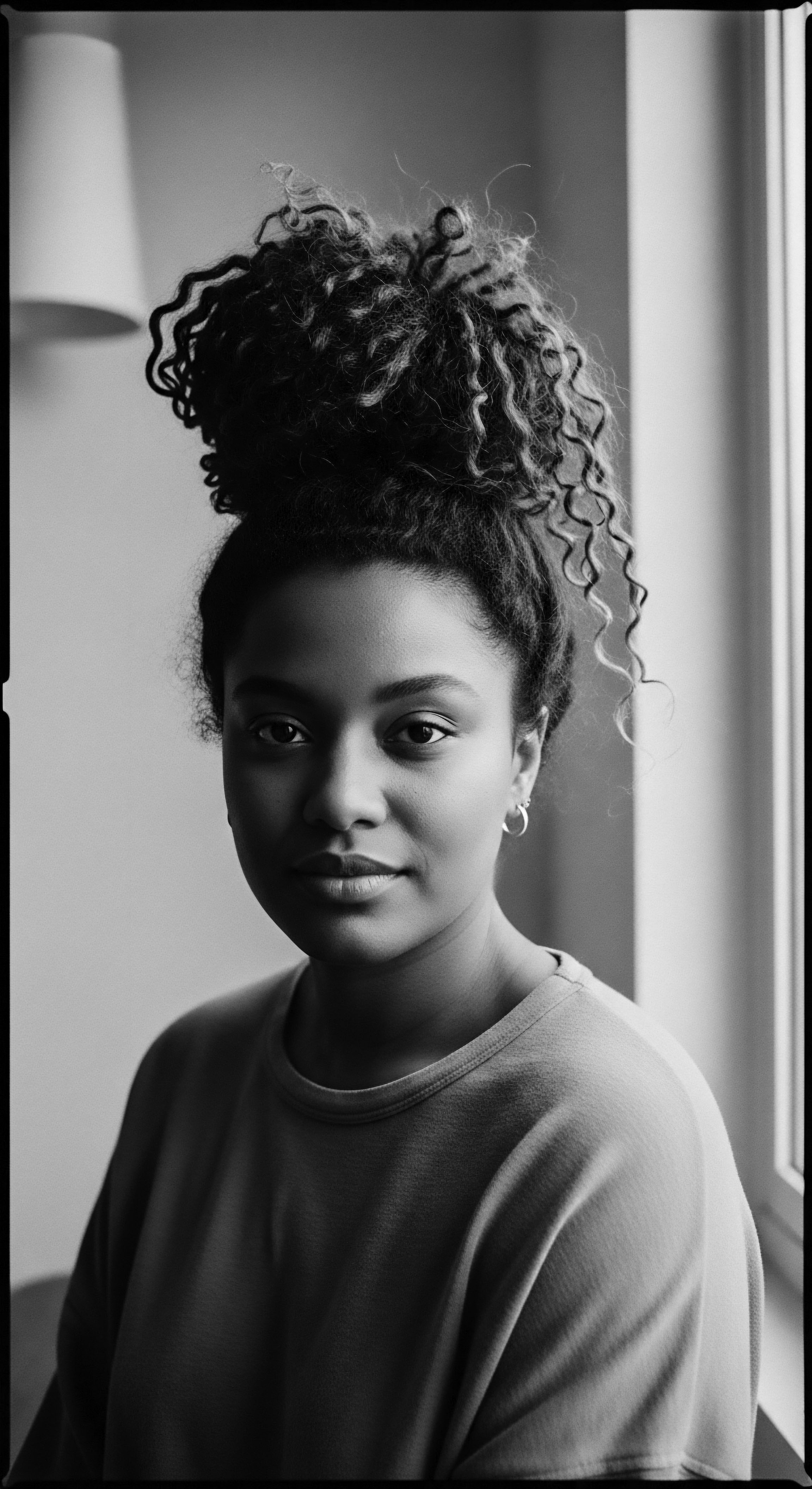
References
- Byrd, A. and Tharps, L. (2001). Hair Story ❉ Untangling the Roots of Black Hair in America. St. Martin’s Press.
- Johnson, D. and Bankhead, T. (2014). Hair Story ❉ Untangling the Roots of Black Hair in America. St. Martin’s Press.
- Macky, I. (comp.). (1935). The Secret Museum of Mankind. Vol. 2. Manhattan House.
- Patton, T. O. (2006). “Hey Girl, Am I More Than My Hair?” ❉ African American Women and Their Struggles with Eurocentric Standards of Beauty. Western Journal of Black Studies, 30(1).
- Sherrow, V. (2006). Encyclopedia of Hair ❉ A Cultural History. Greenwood Press.
- Thompson, C. (2009). Hair Story ❉ Untangling the Roots of Black Hair in America. St. Martin’s Press.
- Walker, S. (2007). Style & Status ❉ Selling Beauty to African American Women (1920-1975). Rutgers University Press.
- Yerima, A. (2017). The Assault on Identity and Self-Esteem of Black People ❉ Hair and Hairstyles. Nouvelles pratiques sociales, 29(2).
